
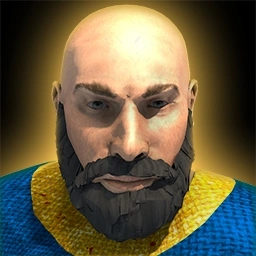 Jean Bureau (1390–1432) was a key figure in the French military and political landscape during the Hundred Years' War.
As a loyal supporter of King Charles VII, Bureau played a pivotal role in the French victories, notably contributing to the successful reconquest of Normandy. His strategic brilliance,
exemplified in the Battle of Formigny, secured his place in history as a skilled military commander and statesman, ultimately influencing the trajectory of the war and shaping the course of French history in the 15th century.
In Age of Empires II, Jean Bureau's unit is a bombard cannon, commonly abbreviated to BBC. This also happens to be the abbreviation for beloved bald caster.
Jean Bureau (1390–1432) was a key figure in the French military and political landscape during the Hundred Years' War.
As a loyal supporter of King Charles VII, Bureau played a pivotal role in the French victories, notably contributing to the successful reconquest of Normandy. His strategic brilliance,
exemplified in the Battle of Formigny, secured his place in history as a skilled military commander and statesman, ultimately influencing the trajectory of the war and shaping the course of French history in the 15th century.
In Age of Empires II, Jean Bureau's unit is a bombard cannon, commonly abbreviated to BBC. This also happens to be the abbreviation for beloved bald caster.
 Khosrau is a figure central to Persian history, known as one of the greatest emperors of the Sassanian Empire, reigning from 531 to 579 AD. He is celebrated for his military prowess, diplomatic acumen, and patronage of the arts and sciences, overseeing a flourishing period of Persian culture and expansion. Khosrau's reign marked significant territorial gains, cultural achievements, and enduring architectural legacies, contributing to the rich tapestry of ancient Persian civilization.
Khosrau is a figure central to Persian history, known as one of the greatest emperors of the Sassanian Empire, reigning from 531 to 579 AD. He is celebrated for his military prowess, diplomatic acumen, and patronage of the arts and sciences, overseeing a flourishing period of Persian culture and expansion. Khosrau's reign marked significant territorial gains, cultural achievements, and enduring architectural legacies, contributing to the rich tapestry of ancient Persian civilization.
 Gajah Mada was a powerful military and political leader in the Majapahit Empire, a vast and influential Hindu-Buddhist kingdom that existed in Southeast Asia from the late 13th to the early 16th century. Serving as the prime minister from 1334 to 1364, Gajah Mada is best known for his unwavering commitment to the pursuit of unity and expansion of the Majapahit realm. His famous oath, the "Palapa Oath," expressed his determination to abstain from certain luxuries until he successfully unified the Indonesian archipelago, a goal he didn't achieve during his lifetime but left an indelible mark on Indonesian history and folklore.
Gajah Mada was a powerful military and political leader in the Majapahit Empire, a vast and influential Hindu-Buddhist kingdom that existed in Southeast Asia from the late 13th to the early 16th century. Serving as the prime minister from 1334 to 1364, Gajah Mada is best known for his unwavering commitment to the pursuit of unity and expansion of the Majapahit realm. His famous oath, the "Palapa Oath," expressed his determination to abstain from certain luxuries until he successfully unified the Indonesian archipelago, a goal he didn't achieve during his lifetime but left an indelible mark on Indonesian history and folklore.
 Alexios Komnenos was a Byzantine emperor who reigned from 1081 to 1118 AD. He is renowned for his efforts to stabilize and revitalize the Byzantine Empire amidst external threats, including invasions by Normans, Pechenegs, and the First Crusade. Alexios implemented military, economic, and administrative reforms that helped fortify the empire and laid the groundwork for its survival and resurgence in the face of significant challenges.
Alexios Komnenos was a Byzantine emperor who reigned from 1081 to 1118 AD. He is renowned for his efforts to stabilize and revitalize the Byzantine Empire amidst external threats, including invasions by Normans, Pechenegs, and the First Crusade. Alexios implemented military, economic, and administrative reforms that helped fortify the empire and laid the groundwork for its survival and resurgence in the face of significant challenges.
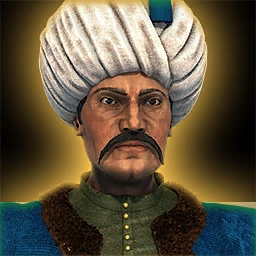 Selim I, also known as Selim the Grim, was the Ottoman Sultan from 1512 to 1520. Renowned for his military prowess and determination, he expanded the Ottoman Empire significantly during his short reign. Selim is particularly remembered for his conquest of the Mamluk Sultanate, securing control over Egypt and the holy cities of Mecca and Medina, marking a crucial period of Ottoman dominance in the Islamic world.
Selim I, also known as Selim the Grim, was the Ottoman Sultan from 1512 to 1520. Renowned for his military prowess and determination, he expanded the Ottoman Empire significantly during his short reign. Selim is particularly remembered for his conquest of the Mamluk Sultanate, securing control over Egypt and the holy cities of Mecca and Medina, marking a crucial period of Ottoman dominance in the Islamic world.
 Pachacuti was an influential ruler of the Inca Empire, reigning from 1438 to 1471. Recognized as one of the greatest Inca leaders, he is credited with transforming the small Kingdom of Cusco into a vast and powerful empire through military conquests and strategic governance. Pachacuti's reign laid the foundation for the expansive territorial and cultural achievements of the Inca civilization.
Pachacuti was an influential ruler of the Inca Empire, reigning from 1438 to 1471. Recognized as one of the greatest Inca leaders, he is credited with transforming the small Kingdom of Cusco into a vast and powerful empire through military conquests and strategic governance. Pachacuti's reign laid the foundation for the expansive territorial and cultural achievements of the Inca civilization.
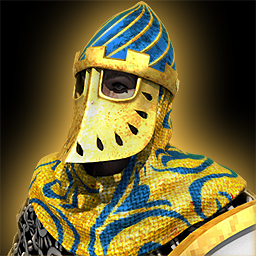 King Stephen of England, who reigned from 1135 to 1154, faced a tumultuous period known as "The Anarchy." His rule was marked by a bitter struggle for the throne against Empress Matilda, leading to widespread chaos and civil unrest. Despite Stephen's efforts to maintain stability, his reign was characterized by political strife and territorial disputes, leaving a lasting impact on the medieval history of England.
King Stephen of England, who reigned from 1135 to 1154, faced a tumultuous period known as "The Anarchy." His rule was marked by a bitter struggle for the throne against Empress Matilda, leading to widespread chaos and civil unrest. Despite Stephen's efforts to maintain stability, his reign was characterized by political strife and territorial disputes, leaving a lasting impact on the medieval history of England.
 Robert Guiscard, a Norman adventurer and military leader, played a pivotal role in the 11th-century Norman conquest of Southern Italy and Sicily. Born in 1015, he rose to prominence through a series of military campaigns, eventually establishing the powerful Hauteville family in the region. Known for his strategic brilliance, Guiscard earned the title "Duke of Apulia" and "Sicily" and left a lasting legacy as a key figure in the Norman expansion in the Mediterranean during the High Middle Ages.
Robert Guiscard, a Norman adventurer and military leader, played a pivotal role in the 11th-century Norman conquest of Southern Italy and Sicily. Born in 1015, he rose to prominence through a series of military campaigns, eventually establishing the powerful Hauteville family in the region. Known for his strategic brilliance, Guiscard earned the title "Duke of Apulia" and "Sicily" and left a lasting legacy as a key figure in the Norman expansion in the Mediterranean during the High Middle Ages.
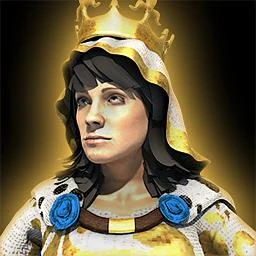 Jadwiga, also known as Hedwig, was a medieval queen who ruled Poland from 1384 until her death in 1399. Crowned as king, rather than queen, due to Polish laws preventing a female ruler, Jadwiga was a unifying figure in her country. Renowned for her benevolence, diplomatic skills, and support for education and culture, she is remembered as one of Poland's most influential and beloved monarchs.
Jadwiga, also known as Hedwig, was a medieval queen who ruled Poland from 1384 until her death in 1399. Crowned as king, rather than queen, due to Polish laws preventing a female ruler, Jadwiga was a unifying figure in her country. Renowned for her benevolence, diplomatic skills, and support for education and culture, she is remembered as one of Poland's most influential and beloved monarchs.
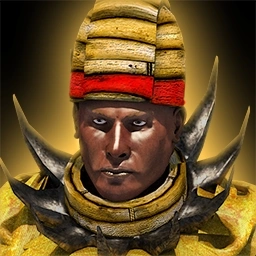 Sumanguru, also known as Sumanguru Kanté, was a legendary figure in West African history during the 13th century. He was the ruler of the Sosso Kingdom, and his military exploits and political maneuvering played a significant role in the ancient Mali Empire's early history. Sumanguru is often remembered as a powerful and contentious figure who faced off against Sundiata Keita, the founder of the Mali Empire, in a legendary battle that marked a turning point in the region's history.
Sumanguru, also known as Sumanguru Kanté, was a legendary figure in West African history during the 13th century. He was the ruler of the Sosso Kingdom, and his military exploits and political maneuvering played a significant role in the ancient Mali Empire's early history. Sumanguru is often remembered as a powerful and contentious figure who faced off against Sundiata Keita, the founder of the Mali Empire, in a legendary battle that marked a turning point in the region's history.
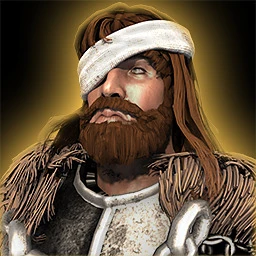 Jan Žižka (c. 1360-1424) was a prominent military leader and strategist during the Hussite Wars in Bohemia, a series of conflicts in the early 15th century. He is best known for his innovative tactics, including the use of mobile armored wagons, which played a crucial role in the Hussite forces' success against more powerful opponents. Žižka's military prowess and leadership left a lasting impact on the history of warfare and earned him a place as one of the most significant figures in Czech history.
Jan Žižka (c. 1360-1424) was a prominent military leader and strategist during the Hussite Wars in Bohemia, a series of conflicts in the early 15th century. He is best known for his innovative tactics, including the use of mobile armored wagons, which played a crucial role in the Hussite forces' success against more powerful opponents. Žižka's military prowess and leadership left a lasting impact on the history of warfare and earned him a place as one of the most significant figures in Czech history.
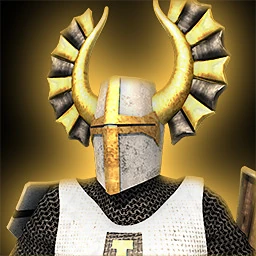 Otto the Great (reigned 936-973) was a medieval German king and Holy Roman Emperor, whose reign marked the revival of the Holy Roman Empire and the consolidation of German authority in Central Europe. He successfully expanded the empire's territory, defeating various enemies including the Magyars, Slavs, and rebellious dukes within Germany. Otto's rule laid the foundation for the Ottonian dynasty's long-lasting influence and set the stage for the medieval German state's development.
Otto the Great (reigned 936-973) was a medieval German king and Holy Roman Emperor, whose reign marked the revival of the Holy Roman Empire and the consolidation of German authority in Central Europe. He successfully expanded the empire's territory, defeating various enemies including the Magyars, Slavs, and rebellious dukes within Germany. Otto's rule laid the foundation for the Ottonian dynasty's long-lasting influence and set the stage for the medieval German state's development.
 Vasco da Gama (c. 1460-1524) was a Portuguese explorer who played a pivotal role in opening the sea route to India. In 1497-1498, he led the first successful expedition around the Cape of Good Hope, reaching the shores of Calicut in southern India. This maritime achievement established a direct trade route between Europe and Asia, significantly impacting global commerce and contributing to Portugal's dominance in the Age of Discovery.
Vasco da Gama (c. 1460-1524) was a Portuguese explorer who played a pivotal role in opening the sea route to India. In 1497-1498, he led the first successful expedition around the Cape of Good Hope, reaching the shores of Calicut in southern India. This maritime achievement established a direct trade route between Europe and Asia, significantly impacting global commerce and contributing to Portugal's dominance in the Age of Discovery.
 Gregory VII, born Hildebrand, was a medieval pope who reigned from 1073 to 1085. One of the most significant figures in the Investiture Controversy, Gregory VII sought to assert the papal authority over secular rulers, particularly in appointing and controlling bishops. His efforts to reform the Church and challenge secular interference had a lasting impact on the relationship between the papacy and political powers in medieval Europe.
Gregory VII, born Hildebrand, was a medieval pope who reigned from 1073 to 1085. One of the most significant figures in the Investiture Controversy, Gregory VII sought to assert the papal authority over secular rulers, particularly in appointing and controlling bishops. His efforts to reform the Church and challenge secular interference had a lasting impact on the relationship between the papacy and political powers in medieval Europe.
 Emperor Sigismund, born in 1368, was a key figure in European politics during the late 14th and early 15th centuries. He served as Holy Roman Emperor from 1433 until his death in 1437 and played a crucial role in attempting to resolve the Western Schism within the Catholic Church. Sigismund's efforts to unite Christian factions and his involvement in various diplomatic endeavors, such as the Council of Constance, aimed at resolving religious and political disputes, left a lasting impact on the complex geopolitical landscape of his time.
Emperor Sigismund, born in 1368, was a key figure in European politics during the late 14th and early 15th centuries. He served as Holy Roman Emperor from 1433 until his death in 1437 and played a crucial role in attempting to resolve the Western Schism within the Catholic Church. Sigismund's efforts to unite Christian factions and his involvement in various diplomatic endeavors, such as the Council of Constance, aimed at resolving religious and political disputes, left a lasting impact on the complex geopolitical landscape of his time.
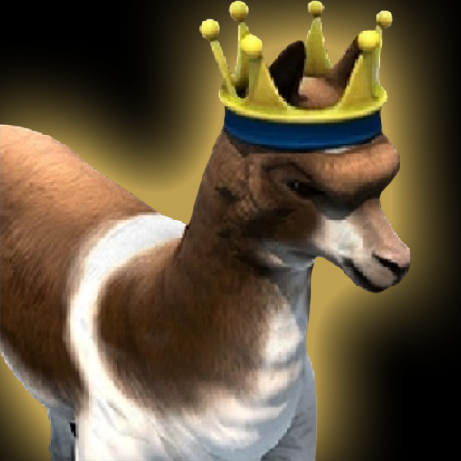 Alfred the Alpaca has similar appearance to a Llama, but is smaller, without saddle, wearing a golden crown and has the ability to speak. He moves at moderate speed (comparable to most infantry) and attacks by headbutting the target. Because he has very high armor and trample damage, Alfred is nearly invincible in melee combat against any unit. However, Alfred struggles against fast ranged units utilizing hit-and-run tactics because it lacks speed and ranged attack.
Alfred the Alpaca has similar appearance to a Llama, but is smaller, without saddle, wearing a golden crown and has the ability to speak. He moves at moderate speed (comparable to most infantry) and attacks by headbutting the target. Because he has very high armor and trample damage, Alfred is nearly invincible in melee combat against any unit. However, Alfred struggles against fast ranged units utilizing hit-and-run tactics because it lacks speed and ranged attack.

 Jean Bureau (1390–1432) was a key figure in the French military and political landscape during the Hundred Years' War.
As a loyal supporter of King Charles VII, Bureau played a pivotal role in the French victories, notably contributing to the successful reconquest of Normandy. His strategic brilliance,
exemplified in the Battle of Formigny, secured his place in history as a skilled military commander and statesman, ultimately influencing the trajectory of the war and shaping the course of French history in the 15th century.
In Age of Empires II, Jean Bureau's unit is a bombard cannon, commonly abbreviated to BBC. This also happens to be the abbreviation for beloved bald caster.
Jean Bureau (1390–1432) was a key figure in the French military and political landscape during the Hundred Years' War.
As a loyal supporter of King Charles VII, Bureau played a pivotal role in the French victories, notably contributing to the successful reconquest of Normandy. His strategic brilliance,
exemplified in the Battle of Formigny, secured his place in history as a skilled military commander and statesman, ultimately influencing the trajectory of the war and shaping the course of French history in the 15th century.
In Age of Empires II, Jean Bureau's unit is a bombard cannon, commonly abbreviated to BBC. This also happens to be the abbreviation for beloved bald caster.
 Khosrau is a figure central to Persian history, known as one of the greatest emperors of the Sassanian Empire, reigning from 531 to 579 AD. He is celebrated for his military prowess, diplomatic acumen, and patronage of the arts and sciences, overseeing a flourishing period of Persian culture and expansion. Khosrau's reign marked significant territorial gains, cultural achievements, and enduring architectural legacies, contributing to the rich tapestry of ancient Persian civilization.
Khosrau is a figure central to Persian history, known as one of the greatest emperors of the Sassanian Empire, reigning from 531 to 579 AD. He is celebrated for his military prowess, diplomatic acumen, and patronage of the arts and sciences, overseeing a flourishing period of Persian culture and expansion. Khosrau's reign marked significant territorial gains, cultural achievements, and enduring architectural legacies, contributing to the rich tapestry of ancient Persian civilization.
 Gajah Mada was a powerful military and political leader in the Majapahit Empire, a vast and influential Hindu-Buddhist kingdom that existed in Southeast Asia from the late 13th to the early 16th century. Serving as the prime minister from 1334 to 1364, Gajah Mada is best known for his unwavering commitment to the pursuit of unity and expansion of the Majapahit realm. His famous oath, the "Palapa Oath," expressed his determination to abstain from certain luxuries until he successfully unified the Indonesian archipelago, a goal he didn't achieve during his lifetime but left an indelible mark on Indonesian history and folklore.
Gajah Mada was a powerful military and political leader in the Majapahit Empire, a vast and influential Hindu-Buddhist kingdom that existed in Southeast Asia from the late 13th to the early 16th century. Serving as the prime minister from 1334 to 1364, Gajah Mada is best known for his unwavering commitment to the pursuit of unity and expansion of the Majapahit realm. His famous oath, the "Palapa Oath," expressed his determination to abstain from certain luxuries until he successfully unified the Indonesian archipelago, a goal he didn't achieve during his lifetime but left an indelible mark on Indonesian history and folklore.
 Alexios Komnenos was a Byzantine emperor who reigned from 1081 to 1118 AD. He is renowned for his efforts to stabilize and revitalize the Byzantine Empire amidst external threats, including invasions by Normans, Pechenegs, and the First Crusade. Alexios implemented military, economic, and administrative reforms that helped fortify the empire and laid the groundwork for its survival and resurgence in the face of significant challenges.
Alexios Komnenos was a Byzantine emperor who reigned from 1081 to 1118 AD. He is renowned for his efforts to stabilize and revitalize the Byzantine Empire amidst external threats, including invasions by Normans, Pechenegs, and the First Crusade. Alexios implemented military, economic, and administrative reforms that helped fortify the empire and laid the groundwork for its survival and resurgence in the face of significant challenges.
 Selim I, also known as Selim the Grim, was the Ottoman Sultan from 1512 to 1520. Renowned for his military prowess and determination, he expanded the Ottoman Empire significantly during his short reign. Selim is particularly remembered for his conquest of the Mamluk Sultanate, securing control over Egypt and the holy cities of Mecca and Medina, marking a crucial period of Ottoman dominance in the Islamic world.
Selim I, also known as Selim the Grim, was the Ottoman Sultan from 1512 to 1520. Renowned for his military prowess and determination, he expanded the Ottoman Empire significantly during his short reign. Selim is particularly remembered for his conquest of the Mamluk Sultanate, securing control over Egypt and the holy cities of Mecca and Medina, marking a crucial period of Ottoman dominance in the Islamic world.
 Pachacuti was an influential ruler of the Inca Empire, reigning from 1438 to 1471. Recognized as one of the greatest Inca leaders, he is credited with transforming the small Kingdom of Cusco into a vast and powerful empire through military conquests and strategic governance. Pachacuti's reign laid the foundation for the expansive territorial and cultural achievements of the Inca civilization.
Pachacuti was an influential ruler of the Inca Empire, reigning from 1438 to 1471. Recognized as one of the greatest Inca leaders, he is credited with transforming the small Kingdom of Cusco into a vast and powerful empire through military conquests and strategic governance. Pachacuti's reign laid the foundation for the expansive territorial and cultural achievements of the Inca civilization.
 King Stephen of England, who reigned from 1135 to 1154, faced a tumultuous period known as "The Anarchy." His rule was marked by a bitter struggle for the throne against Empress Matilda, leading to widespread chaos and civil unrest. Despite Stephen's efforts to maintain stability, his reign was characterized by political strife and territorial disputes, leaving a lasting impact on the medieval history of England.
King Stephen of England, who reigned from 1135 to 1154, faced a tumultuous period known as "The Anarchy." His rule was marked by a bitter struggle for the throne against Empress Matilda, leading to widespread chaos and civil unrest. Despite Stephen's efforts to maintain stability, his reign was characterized by political strife and territorial disputes, leaving a lasting impact on the medieval history of England.
 Robert Guiscard, a Norman adventurer and military leader, played a pivotal role in the 11th-century Norman conquest of Southern Italy and Sicily. Born in 1015, he rose to prominence through a series of military campaigns, eventually establishing the powerful Hauteville family in the region. Known for his strategic brilliance, Guiscard earned the title "Duke of Apulia" and "Sicily" and left a lasting legacy as a key figure in the Norman expansion in the Mediterranean during the High Middle Ages.
Robert Guiscard, a Norman adventurer and military leader, played a pivotal role in the 11th-century Norman conquest of Southern Italy and Sicily. Born in 1015, he rose to prominence through a series of military campaigns, eventually establishing the powerful Hauteville family in the region. Known for his strategic brilliance, Guiscard earned the title "Duke of Apulia" and "Sicily" and left a lasting legacy as a key figure in the Norman expansion in the Mediterranean during the High Middle Ages.
 Jadwiga, also known as Hedwig, was a medieval queen who ruled Poland from 1384 until her death in 1399. Crowned as king, rather than queen, due to Polish laws preventing a female ruler, Jadwiga was a unifying figure in her country. Renowned for her benevolence, diplomatic skills, and support for education and culture, she is remembered as one of Poland's most influential and beloved monarchs.
Jadwiga, also known as Hedwig, was a medieval queen who ruled Poland from 1384 until her death in 1399. Crowned as king, rather than queen, due to Polish laws preventing a female ruler, Jadwiga was a unifying figure in her country. Renowned for her benevolence, diplomatic skills, and support for education and culture, she is remembered as one of Poland's most influential and beloved monarchs.
 Sumanguru, also known as Sumanguru Kanté, was a legendary figure in West African history during the 13th century. He was the ruler of the Sosso Kingdom, and his military exploits and political maneuvering played a significant role in the ancient Mali Empire's early history. Sumanguru is often remembered as a powerful and contentious figure who faced off against Sundiata Keita, the founder of the Mali Empire, in a legendary battle that marked a turning point in the region's history.
Sumanguru, also known as Sumanguru Kanté, was a legendary figure in West African history during the 13th century. He was the ruler of the Sosso Kingdom, and his military exploits and political maneuvering played a significant role in the ancient Mali Empire's early history. Sumanguru is often remembered as a powerful and contentious figure who faced off against Sundiata Keita, the founder of the Mali Empire, in a legendary battle that marked a turning point in the region's history.
 Jan Žižka (c. 1360-1424) was a prominent military leader and strategist during the Hussite Wars in Bohemia, a series of conflicts in the early 15th century. He is best known for his innovative tactics, including the use of mobile armored wagons, which played a crucial role in the Hussite forces' success against more powerful opponents. Žižka's military prowess and leadership left a lasting impact on the history of warfare and earned him a place as one of the most significant figures in Czech history.
Jan Žižka (c. 1360-1424) was a prominent military leader and strategist during the Hussite Wars in Bohemia, a series of conflicts in the early 15th century. He is best known for his innovative tactics, including the use of mobile armored wagons, which played a crucial role in the Hussite forces' success against more powerful opponents. Žižka's military prowess and leadership left a lasting impact on the history of warfare and earned him a place as one of the most significant figures in Czech history.
 Otto the Great (reigned 936-973) was a medieval German king and Holy Roman Emperor, whose reign marked the revival of the Holy Roman Empire and the consolidation of German authority in Central Europe. He successfully expanded the empire's territory, defeating various enemies including the Magyars, Slavs, and rebellious dukes within Germany. Otto's rule laid the foundation for the Ottonian dynasty's long-lasting influence and set the stage for the medieval German state's development.
Otto the Great (reigned 936-973) was a medieval German king and Holy Roman Emperor, whose reign marked the revival of the Holy Roman Empire and the consolidation of German authority in Central Europe. He successfully expanded the empire's territory, defeating various enemies including the Magyars, Slavs, and rebellious dukes within Germany. Otto's rule laid the foundation for the Ottonian dynasty's long-lasting influence and set the stage for the medieval German state's development.
 Vasco da Gama (c. 1460-1524) was a Portuguese explorer who played a pivotal role in opening the sea route to India. In 1497-1498, he led the first successful expedition around the Cape of Good Hope, reaching the shores of Calicut in southern India. This maritime achievement established a direct trade route between Europe and Asia, significantly impacting global commerce and contributing to Portugal's dominance in the Age of Discovery.
Vasco da Gama (c. 1460-1524) was a Portuguese explorer who played a pivotal role in opening the sea route to India. In 1497-1498, he led the first successful expedition around the Cape of Good Hope, reaching the shores of Calicut in southern India. This maritime achievement established a direct trade route between Europe and Asia, significantly impacting global commerce and contributing to Portugal's dominance in the Age of Discovery.
 Gregory VII, born Hildebrand, was a medieval pope who reigned from 1073 to 1085. One of the most significant figures in the Investiture Controversy, Gregory VII sought to assert the papal authority over secular rulers, particularly in appointing and controlling bishops. His efforts to reform the Church and challenge secular interference had a lasting impact on the relationship between the papacy and political powers in medieval Europe.
Gregory VII, born Hildebrand, was a medieval pope who reigned from 1073 to 1085. One of the most significant figures in the Investiture Controversy, Gregory VII sought to assert the papal authority over secular rulers, particularly in appointing and controlling bishops. His efforts to reform the Church and challenge secular interference had a lasting impact on the relationship between the papacy and political powers in medieval Europe.
 Emperor Sigismund, born in 1368, was a key figure in European politics during the late 14th and early 15th centuries. He served as Holy Roman Emperor from 1433 until his death in 1437 and played a crucial role in attempting to resolve the Western Schism within the Catholic Church. Sigismund's efforts to unite Christian factions and his involvement in various diplomatic endeavors, such as the Council of Constance, aimed at resolving religious and political disputes, left a lasting impact on the complex geopolitical landscape of his time.
Emperor Sigismund, born in 1368, was a key figure in European politics during the late 14th and early 15th centuries. He served as Holy Roman Emperor from 1433 until his death in 1437 and played a crucial role in attempting to resolve the Western Schism within the Catholic Church. Sigismund's efforts to unite Christian factions and his involvement in various diplomatic endeavors, such as the Council of Constance, aimed at resolving religious and political disputes, left a lasting impact on the complex geopolitical landscape of his time.
 Alfred the Alpaca has similar appearance to a Llama, but is smaller, without saddle, wearing a golden crown and has the ability to speak. He moves at moderate speed (comparable to most infantry) and attacks by headbutting the target. Because he has very high armor and trample damage, Alfred is nearly invincible in melee combat against any unit. However, Alfred struggles against fast ranged units utilizing hit-and-run tactics because it lacks speed and ranged attack.
Alfred the Alpaca has similar appearance to a Llama, but is smaller, without saddle, wearing a golden crown and has the ability to speak. He moves at moderate speed (comparable to most infantry) and attacks by headbutting the target. Because he has very high armor and trample damage, Alfred is nearly invincible in melee combat against any unit. However, Alfred struggles against fast ranged units utilizing hit-and-run tactics because it lacks speed and ranged attack.